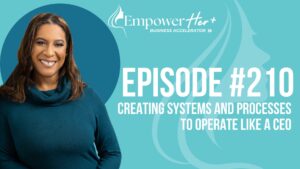Crafting a Year-Long Marketing Strategy: Essential Insights for Small Business Success
As the host of the “Marketing 101 for Small Business Owners” podcast, I’ve had the pleasure of guiding countless entrepreneurs through the intricate dance of marketing. In one of my most recent episodes, I dove deep into the art of planning a marketing strategy for the entire year. Today, I want to share with you the invaluable lessons and insights from that discussion, which are crucial for any small business owner looking to make a mark.
Understanding Your Audience: The Heartbeat of Your Business
The journey of crafting a marketing strategy begins with a profound understanding of your audience. I often liken the audience to the heartbeat of a business – without a pulse, there’s no life. To create a strategy that truly resonates, you must define your target audience. This includes their preferences, behaviors, and pain points. For those starting from scratch, this may seem daunting, but as your client base grows, patterns will emerge, offering a clearer picture of who your audience is.
I can’t stress enough the importance of creating detailed customer personas. These should encompass demographics, interests, challenges, and psychographics. It’s about getting into the minds of your customers, understanding their decision-making processes, their deep concerns, and fears. This knowledge is the bedrock of a strategy that speaks directly to your customers. Remember, it’s better to focus on the ideal customer for your product or service rather than casting too wide a net.
Setting Goals and KPIs: Your Marketing Compass
Once you know who you’re talking to, it’s time to set meaningful goals. Key performance indicators (KPIs) are your compass in the marketing world. They help you measure the success of your efforts. Aligning your KPIs with your goals is crucial. Without clear goals, tracking success becomes a shot in the dark. Whether it’s increasing brand awareness, boosting sales, or growing your online community, your KPIs should reflect these objectives.
Choosing the Right Marketing Channels: Quality Over Quantity
Not all marketing channels will be right for your business. It’s essential to select channels that align with both your audience and your business goals. Evaluate the effectiveness of your current channels. If they’re underperforming, consider improving them or trying new ones. As a small business owner, you must be strategic in your selection. It’s better to manage a few channels well than to spread yourself too thin across many.
The Content Calendar: Your Blueprint for Consistency
Planning ahead is key, and a content calendar is your blueprint for maintaining consistency. From my own experience with planning podcast content, I can attest to the importance of regularity and frequency. Create a content calendar for the entire year, mapping out topics, delivery channels, and engagement strategies. This proactive approach keeps you ahead of the curve and ensures a strong online presence.
Wrapping Up: The Pillars of a Robust Marketing Foundation
In summary, the pillars of a successful marketing strategy are understanding your audience, setting meaningful goals, choosing the right marketing channels, and maintaining consistency with a well-crafted content calendar. These elements are non-negotiable for a robust marketing foundation that will set you up for a successful year.
I encourage you to subscribe and share the content from my podcast, “Marketing 101 for Small Business Owners.” As a token of my appreciation, I’m offering a free marketing consultation session to help you get started on your journey.
The insights I’ve shared are more than just tips; they’re the building blocks for a purposeful and engaging marketing strategy. As small business owners, we have the power to create remarkable narratives that connect with our audience and drive our businesses forward. Here’s to a year of strategic growth and marketing success!














